Exploring the Impact of Fallout Figurines in Gaming
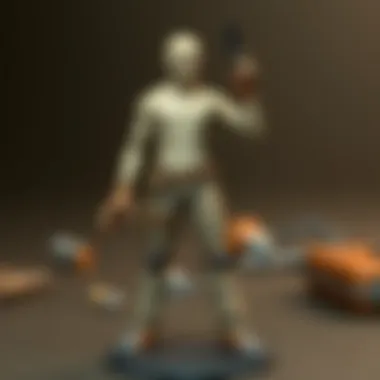
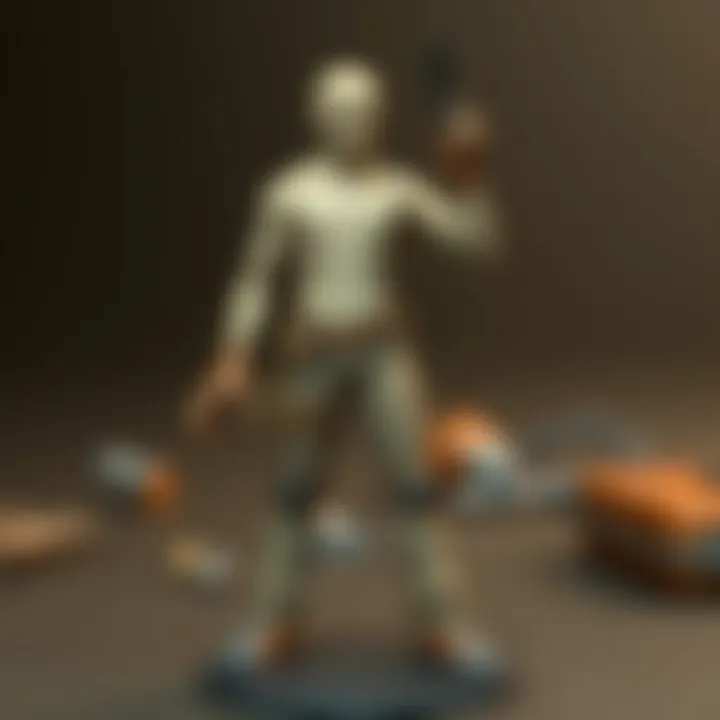
Lore Insights
Overview of the Fallout Universe
The Fallout universe is a sprawling, post-apocalyptic landscape, shaped by nuclear devastation and the remnants of pre-war society. With its rich lore, the setting reflects a mix of 1950s Americana and dystopian futures, making it unique in the gaming landscape. Central to this world are the Vaults, designed to protect inhabitants from nuclear fallout, each with its own narrative and implications. This backdrop not only serves as the canvas for gameplay but also enriches the figurines that depict characters and factions forged by these historical contexts.
Key historical events in the Fallout timeline
Fallout's timeline is riddled with wars, technology advancements, and betrayals, all of which are crucial in understanding the collectibles inspired by the series. The Great War, occurring on October 23, 2077, marks the beginning of the nuclear apocalypse, annihilating cities and leaving a devastated world behind. Events like the rise of the Brotherhood of Steel and the experiences in the various Vaults play significant roles in shaping characters. These figurines often commemorate pivotal moments in this timeline, providing fans a tactile link to the lore they hold dear.
Deep dive into the backstory of major factions and characters
Much of Fallout’s allure lies in its diverse factions and characters, each with complex narratives. The Brotherhood of Steel embodies the struggle for technological preservation and ethical dilemmas about its use. Conversely, the Enclave represents the remnants of the pre-war government, often positioned as the antagonists seeking to reclaim control. Characters such as Vault Boy serve not only as mascots but as representations of the moral choices players face, thus creating a deep emotional resonance between fans and the figurines portraying these elements.
"Figurines transform these vivid narratives into tangible artifacts, allowing collectors to hold a piece of the Fallout history in their hands."
The craftsmanship behind the figurines offers insight into the intricate designs that stem from this lore, each aspect carefully considered to reflect character stories and collective consciousness within the gaming community.
The Cultural Impact of Fallout Figurines
Fallout figurines hold a significant place in the gaming culture, bridging the gap between the virtual world of the games and the tangible experiences of collectors and fans. These collectibles enhance the narrative of the Fallout universe, allowing enthusiasts to express their love for the series in a physical form. Each figurine often embodies the intricate design and lore of its character, resonating deeply with players who have spent countless hours navigating the post-apocalyptic landscape.
By analyzing the cultural impact of Fallout figurines, we uncover how they not only serve as decorative items but also as symbols of community and nostalgia. Many collectors find that owning these figurines allows them to maintain a connection with the game and its expansive storyline. This aspect is crucial, as it highlights how merchandise often goes beyond mere commercial value; it becomes a part of shared experiences and personal histories.
Historical Context of Fallout Merchandise
The journey of Fallout merchandise can be traced back to the first-ever game release in 1997. Initially, the merchandise consisted of basic items like T-shirts and posters that primarily catered to the fanbase. Over the years, as the series evolved and expanded its lore, so did the products associated with it. The introduction of Vault Boy figurines marked a pivotal turn in the merchandise landscape, leading to various limited edition figures, art books, and even life-sized replicas of iconic props.
Collecting became the name of the game in the 2000s, with figures often emerging as beloved treasures. For instance, the iconic Power Armor figures reflect not only the game's aesthetic but also fan favorites from various installments. The rarity and uniqueness of these items quickly turned them into hot commodities in the marketplace, shaping collectors' attitudes towards them.
Thus, the historical context of Fallout merchandise demonstrates an evolution in marketing strategies, as well as a solidification of the community around the franchise. With each new game release, collectors anticipate the latest figurines, contributing to a thriving economy built around nostalgia and fandom.
Marketplace Trends and Collectability
In recent years, the marketplace for Fallout figurines has witnessed a noticeable shift. Social media and online marketplaces have made sharing collections and trading figures simpler than ever before. This has resulted in a sprawling community where collectors can engage with one another, show off their collections, and stay informed about upcoming releases.
Several factors have driven the trend of collecting Fallout figurines:
- Limited Editions: Figures released in limited quantities often see dramatic increases in value over time. For instance, special figures tied to game anniversaries or major releases tend to be sought after.
- Collaboration with Artists: The collaboration with various artists has added a layer of artistic value to the figures. Unique designs make certain items standout.
- Marketplaces: Online platforms like eBay and Etsy have become hotspots for collectors, enabling trading and purchasing that was previously unavailable.
This growing trend reflects not just a hobby but a cultural phenomenon, where fan investment translates into tangible pieces of art and memory. As Fallout continues to expand its universe, the demand for these collectibles is anticipated to rise, ensuring their continued importance in the gaming landscape.
Collectors aren’t just accruing figurines; they’re building a narrative—a personal story intertwined with the fabric of the Fallout universe.
Designer Insights: Crafting Fallout Figurines
In the realm of collectibles, the artistry behind Fallout figurines plays a crucial role in their appeal and value. The insight into the designer's craft not only portrays the attention to detail but also sheds light on the overall ethos of the Fallout series. A well-crafted figurine encapsulates the myriad themes of dystopia, survival, and human quirkiness that define the franchise. By understanding the artistry and design process, collectors can better appreciate what makes these figures iconic and sought after.
Artistic Development and Concept Design
The creation of Fallout figurines begins at the very roots of artistic development. Designers engage in concept sketches, transitioning from crude ideas to fully formed characters. This is not a one-and-done process. Instead, it’s an iterative cycle involving feedback, refinement, and occasional squabbles over what even defines a character within the Fallout universe. The essence of each figurine often starts with a comprehensive understanding of the game’s lore. For example, take the Vault Dweller; the ethos tied to survival and resourcefulness shapes not just their posture but also the choice of equipment depicted.
Designers often sift through mountains of game artwork and player feedback when putting together their vision. They consider not just how a character looks but how they embody the Fallout spirit. Colors are chosen to echo the game's retro-futuristic aesthetic, while textures are added to hint at the rugged environments these characters inhabit.
"Great design breathes life into the character, making even a plastic figure more than just a piece of merchandise, it becomes a part of our storytelling."
— Local Artist and Collector
In translating a character from pixels to plastic, the relationship between two-dimensional designs and three-dimensional outputs becomes paramount. Designers wrestle with aspects like scale, proportion, and articulation, ensuring that even the smallest details resonate with fans. The Super Mutant, for instance, requires robust musculature, while the Securitron draws from mechanical intricacies that can be challenging to depict successfully.
Material Choices and Production Techniques
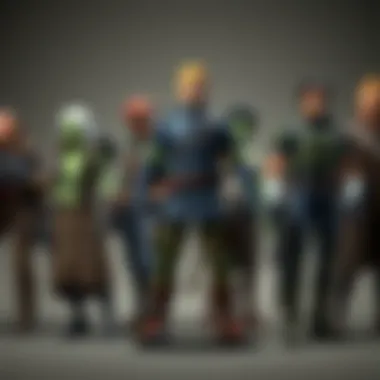
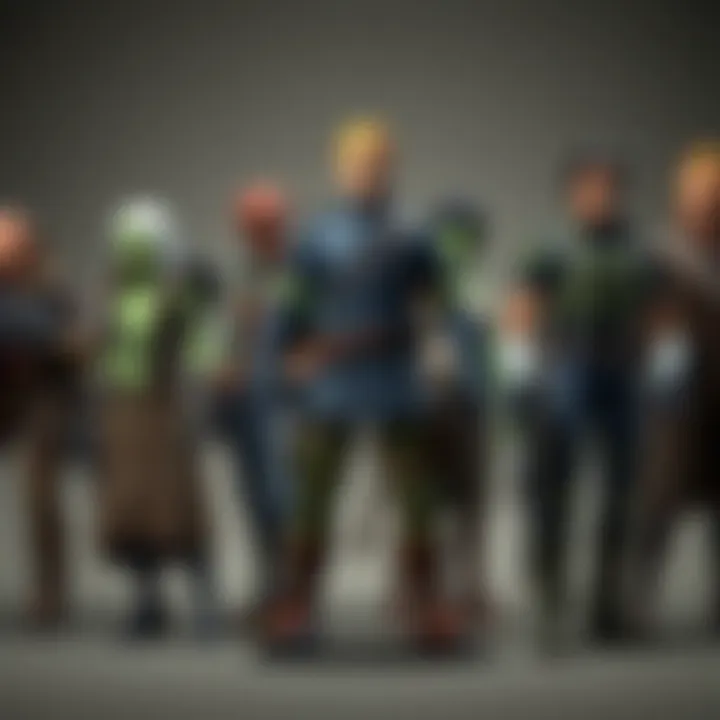
When it comes to producing quality Fallout figurines, the materials selected can make or break the end product. Most collectible figures adopt polyvinyl chloride (PVC) for its durability and ease of molding. However, some designers opt for premium materials like resin, which can offer sharper details and a higher-quality finish but come at a more considerable cost. This choice directly relates to collector expectations and ultimately influences market trends.
Production techniques further refine these materials into what fans will recognize. Techniques like injection molding for the main body structures are common, but additional elements such as hand-painting are often employed to deliver unique finishes. Some brands even showcase limited runs where hand-crafted technique takes precedence, drawing in collectors who appreciate the human touch behind mass production.
Moreover, environmental implications are becoming a topic of discussion within figurine crafting. As awareness grows, some companies are beginning to explore bioplastics or recycled materials without sacrificing aesthetic appeal. This shift might resonate with a generation of gamers who not only care for collectibles but also the impact these products leave on the world.
The intricate dance of choosing right materials alongside proficient production methods crafts the high-quality collectibles that sit proudly on display shelves. Ultimately, these designer insights provide collectors not just with figures but with an enriching experience that celebrates the lore and artistry behind the Fallout universe.
Character Representations in Figurines
In the realm of collectibles, few items resonate as deeply as figurines representing beloved characters from video games. Fallout figurines stand tall in this regard, embodying the rich lore and narratives of the franchise. The characters brought to life in these miniatures allow fans to connect in a tangible way to a post-apocalyptic world that has captivated imaginations for years. This section will delve into the crucial role that character representations play in Fallout figurines, covering prominent figures, their captivating traits, and the significance of secondary characters.
Popular Characters and Their Unique Features
Fallout's characters are a unique blend of humor, grit, and resilience, and this is mirrored in the craftsmanship of the figurines. Take, for instance, the iconic Vault Boy, the mascot of the series whose cheerful demeanor starkly contrasts with the wasteland's harsh realities. Crafted with meticulous attention, his thumbs-up gesture has become a nostalgic symbol for fans, representing hope amidst despair.
On the other end of the spectrum, we have characters like the Sole Survivor. This figurine captures the complexity of the protagonist, representing not just a character but the very embodiment of choice and morality that players wrestle with through their journey. Each detail, from the dirty jumpsuit to the battered Pip-Boy, reflects the struggle of survival.
Moreover, characters in power armor resonate with fans for their sheer size and detail. These figures arrive adorned with intricate paint jobs that highlight battle scars, giving a visual representation of their journeys through the wasteland.
“Each character tells a story, not just through gameplay but through the craftsmanship in their figurines.”
The Role of Secondary Characters
While the lead characters often steal the limelight, secondary characters in Fallout also contribute significantly to the narrative tapestry. Figures like Piper Wright or Paladin Danse have their following, with fans appreciating their unique story arcs and personalities. The figurines of these characters, albeit not as prominent as the main heroes, embody the broader themes of diversity and depth within the game's universe.
They often come with thoughtfully designed accessories that speak to their backgrounds—Piper’s notepad and Danse’s laser rifle, for instance. Collecting secondary characters alongside main ones adds layers to a collector's narrative; it offers a deeper connection to the world and its inhabitants. This desire to collect the underrepresented reflects a key element in what drives fandom and collecting culture.
Variants and Recolorings: Understanding Choices
Variants and recolorings among Fallout figurines offer an engaging dialogue between creators and collectors. Different versions of the same character can cater to a myriad of fan preferences. For example, limited edition figures often come adorned with exclusive colors or features that stands out on a shelf.
These variations allow collectors to express their individuality; some might prefer the classic color scheme, while others might opt for a chrome or glow-in-the-dark version. It’s not merely about aesthetics; it's about what those choices represent.
Understanding the motivations behind such releases can enhance appreciation. Collectors may seek to find specific variants to complete their set, or they might be drawn to unique designs that capture a moment or mood from the games. The thrill of the hunt for these editions reinforces community bonds and engages collectors in discussions regarding rarity and desirability.
As Fallout continues to grow, the character representations in figurines will undoubtedly evolve, incorporating new elements that reflect the changing landscape of both the game and its dedicated fanbase.
The Emotional Connection: Why Fans Collect
The act of collecting can often be a profound reflection of one’s identity, especially in the context of fandoms. Fallout figurines manage to create a unique interplay between nostalgia, memories, and community bonding, making them highly coveted objects for collectors. This emotional connection transcends mere ownership; it forges ties between personal experiences and collective narratives that fans cherish.
Nostalgia and Memory: Linking Players to Experiences
At its core, the nostalgia surrounding Fallout figurines is deeply rooted in the experiences they represent. Many fans first encountered the Fallout series during formative years, leading to a deep sense of affection for the vivid worlds and characters. For instance, a figurine of the iconic Vault Boy often evokes memories of late-night game sessions, where strategies were devised and triumphs celebrated. Collecting these figures offers a tangible anchor to those moments, enabling individuals to revisit times filled with joy, laughter, or even heartache.
Additionally, the series itself is rife with themes of choice and consequence, encouraging fans to reflect on their own lives. When a collector displays a particular character, it often tells a story—of the choices they've made in-game and, by extension, those they've faced in life itself. The intricately sculpted details on each figurine serve as reminders of quests completed, friendships formed, and battles won, linking the figurine back to the player’s unique journey through the wasteland.
"Collecting Fallout figurines takes me back to my teenage years, when my friends and I first discovered the series. We could spend hours exploring the universe together. Each figure reminds me of those adventures.”
Community and Sharing: Building Bonds Through Collecting
In the world of collectibles, community plays a significant role. The Fallout fanbase is vibrant and dedicated, often coming together in forums, conventions, and social media platforms to share their passion and collections. This sense of community cultivates a welcoming atmosphere for both seasoned collectors and newcomers alike, promoting an exchange of ideas, tips, and appreciation for the art of figurine collecting.
Fans often take great pride in showcasing their collections on platforms like Reddit or Facebook, sparking discussions and collaborations within the fandom. When collectors share images of their carefully curated displays, they not only showcase their own collections but also inspire other fans to reflect on their journeys and possibly begin their own collections.
Furthermore, attending conventions and trade shows often serves as a rite of passage for dedicated fans. Here, attendees can meet others who share their passion, engage in lively discussions about the game’s lore, and discover new collectible releases. These events foster a sense of belonging, where fans can freely express their enthusiasm without fear of judgment. The act of collecting thus becomes a vessel for building friendships and meaningful connections, threading together a tapestry of shared memories within the Fallout community.
Display and Care: Showcasing Your Collection
Displaying and caring for Fallout figurines is not merely a matter of aesthetics. It’s about preserving the legacy of a beloved franchise while ensuring that these treasures stand the test of time. Collectors know that a carefully showcased piece can evoke memories, spark conversations, and perhaps even become the centerpiece of a room. This section dives into the best practices for both displaying and maintaining those captivating figurines that hold such value to fans.
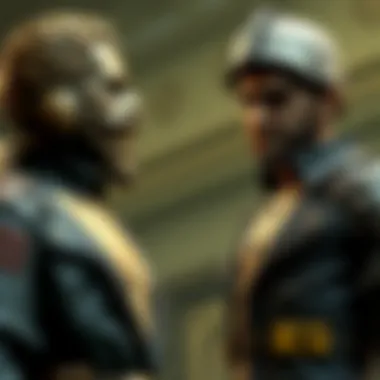
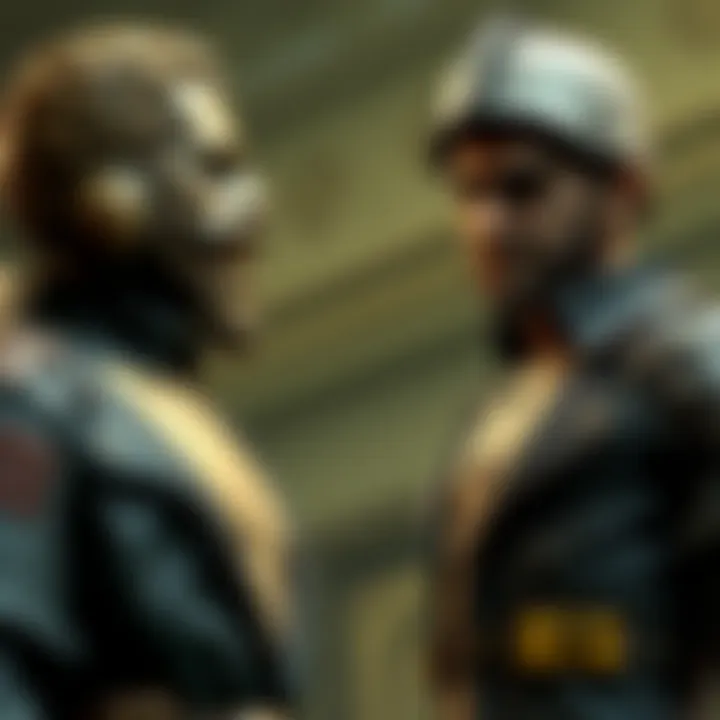
Optimal Display Techniques for Preservation
When it comes to displaying Fallout figurines, the goal is to highlight their unique attributes while protecting them from potential damage. Here are some techniques worth considering:
- Use Display Cases: Acquiring a glass display case can greatly enhance the visibility of your collection while keeping dust and debris at bay. A case also provides a barrier against accidental knocks, which could harm the fragile pieces.
- Avoid Direct Sunlight: Placing figurines in direct sunlight may fade colors over time. Instead, opt for a location that has even lighting, possibly using soft LED lights to accentuate features without causing harm.
- Utilize Floating Shelves: Floating shelves provide a modern and clean way to display your figurines. They can be arranged at varying heights to create a visually dynamic arrangement that reflects your personal style.
- Group by Theme: Displaying characters from similar lore or games together can enhance your collection's story. For instance, group all Vault Dweller figures with their related enemies to create a narrative scene that you and your visitors can appreciate.
In summary, a thoughtful approach to displaying your Fallout figurines can create an environment that’s both functional and captivating.
Cleaning and Maintenance for Longevity
Maintaining the condition of your Fallout figurines requires regular care to prevent wear and tear. Here are some straightforward cleaning and maintenance tips:
- Dust Regularly: Use a soft, dry microfiber cloth to gently dust your figurines weekly. This simple routine keeps them looking fresh without scratching or damaging the delicate paint and finishes.
- Check for Loose Parts: Over time, some figurines may develop loose joints or parts. Periodically inspect your collection to ensure everything is secure. If you find an issue, consider using a small amount of safe adhesive to fix it.
- Avoid Harsh Chemicals: When cleaning, stick to mild soap and water if necessary. Harsh chemicals can lead to discoloration or deterioration of the materials used in your figurines.
- Store Carefully When Not on Display: If you need to put away any pieces, retain their original packaging if possible. This not only protects them but can also help with valuation if you ever decide to sell.
"Maintaining your figurines properly is the real secret to preserving their value and the memories they carry."
To summarize, proper care and display techniques are essential in showcasing your Fallout figurines. They ensure that these collectibles remain not only visually appealing but also in excellent condition for years to come.
The Future of Fallout Figurines
The landscape of collectibles is continuously shifting, and Fallout figurines are no exception to this trend. Understanding their future is vital as it encompasses the evolving tastes of fans, advancements in technology, and the potential for new narratives within the Fallout universe. This segment examines how these factors contribute to the ongoing legacy and growth of Fallout figurines in the broader context of pop culture.
Innovations in Figurine Design and Technology
The journey into the future of Fallout figurines is paved with technological advancements that enhance both their aesthetic appeal and functionality. 3D printing and augmented reality are two prominent examples that have reshaped this collectible market.
- 3D Printing: This technology has taken the crafting of figurines to the next level. It enables creators to produce intricate details and customize designs with pinpoint accuracy. Fans can potentially craft their own unique versions of beloved characters or create entirely new ones, promoting creativity and personal connection.
- Augmented Reality: Imagine scanning a figurine and seeing it come to life on your device screen. Developers are exploring AR to create interactive experiences around their figurines, allowing collectors to explore backgrounds, special moves, or voice lines of their favorite characters. This blurring of digital and physical worlds could reshape the ways we appreciate these collectibles.
These innovations signify a shift from simple static models to dynamic artistic expressions. With each leap in technology, the emotional and nostalgic connections fans maintain with their collections could deepen.
Potential Collaborations and Expansions of the Series
As the Fallout universe grows, so too does the opportunity for collaborations and expansions. Partnerships between game developers and figurine manufacturers can lead to new releases that resonate with the franchise's timeless themes, offering fresh content for enthusiasts.
- Cross-Promotional Events: Collaborations with companies for limited edition releases could prove fruitful. For example, teaming up with a renowned game convention for exclusive figurines might appeal to dedicated collectors and fans attending those events.
- Expanding Lore: As new Fallout games are introduced or existing titles are revamped, manufacturers can jump on the chance to create figurines based on newly introduced characters or narrative elements. This not only enriches the future figurine line-up but also keeps the existing collection relevant as players engage with evolving storylines.
The potential for collaboration also extends to other media adaptations, such as television series or films in the pipeline, which can introduce a broader audience to themed collectibles. Topics and designs could offer something for both hardcore veterans and new fans.
"In the end, the future of Fallout figurines is a testament not just to the franchise's enduring appeal but also to the innovative spirit of its community. Quality and creativity will lead the way in keeping these collectibles alive and thriving."
In summary, the future of Fallout figurines holds great promise, characterized by advancements in design technology and exciting collaborations that can enhance their cultural significance. Collectors and fans alike can look forward to a continuously evolving landscape that reflects their passionate engagement with the franchise.
Collector's Guide: What to Look For
When it comes to collecting Fallout figurines, having a solid strategy can markedly enhance the overall experience. Collectors ought to be armed with knowledge about the ins and outs of these figures, from quality indicators to their market viability. Recognizing what you’re looking for is not merely helpful; it’s paramount in distinguishing between what’s worth your time and investment, versus what might end up being just another dust collector on your shelf.
Identifying Quality and Authenticity
The world of collectibles can be rife with fakes and low-quality products. Thus, being able to spot quality and authenticity in Fallout figurines is essential. When approching potential purchases, there are various factors to consider:
- Material Examination: Quality figurines are often made with durable materials, such as PVC or high-grade resin. Weighing the figurine can also help; authentic ones tend to have a more substantial feel than cheaper alternative.
- Detailing and Paint Job: Examine the fine details of the figurine. Look for sharpness in the sculpting and the paint job. A well-made figure will lack smudges and uneven coloring. For instance, the Pip-Boy figurines should have accurate color patterns aligned with their in-game appearance.
- Brand Marks and Packaging: Make sure to check for brand logos, part numbers, or other identifiers that indicate authenticity. Often, reputable manufacturers will provide packaging that reflects their brand’s aesthetic, complete with illustrations and descriptions.
"Identifying quality is like finding a needle in a haystack; it’s all about the little things that stick out."
Understanding Market Value and Rarity
Navigating the market value of Fallout figurines is akin to greeting a puzzle with a magnifying glass. Particularly for avid collectors, understanding rarity can be a smart move, as it directly influences a figurine's desirability and price. Here are some considerations:
- Limited Editions: Figures released in limited quantities tend to fetch higher prices over time. For example, a rare variant of the Deathclaw may be significantly more valuable than a regular version simply due to its scarcity.
- Condition Matters: A figurine that’s still in its original box and has not been displayed might hold better value compared to one that shows wear and tear. Collectors who keep them in pristine condition can expect a better return if they ever decide to sell.
- Current Market Trends: Keep an ear to the ground for changing trends within collector communities. Websites like Reddit and fandom forums can be excellent resources for gauging what others are willing to pay for certain items.
- Historical Value: Some figurines, such as those released alongside milestone anniversaries or significant game releases, may gain historical value over time.
By linking quality assessment with market trends, collectors can make informed decisions when expanding their collections. Keeping informed and aware can be the difference between a great score and a costly blunder.
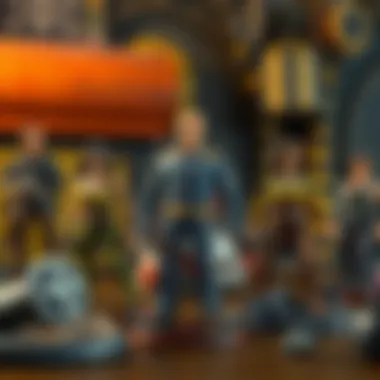
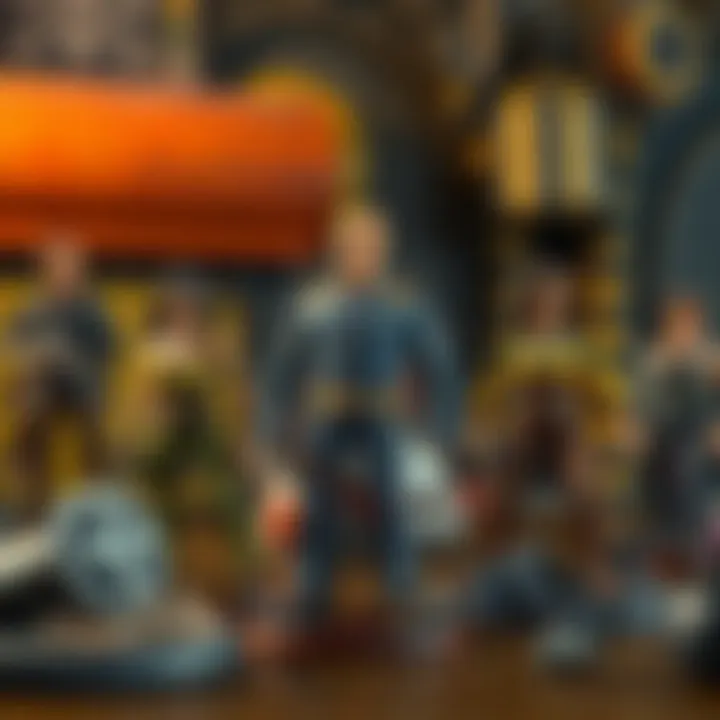
Comparative Analysis: Fallout Figurines vs. Other Gaming Collectibles
The landscape of gaming collectibles offers a rich tapestry of merchandise, each thread tied closely to the games they represent. Within this arena, Fallout figurines occupy a unique niche, celebrated not just for their quality but also for their deep connection to the series’ lore and fan base. This section dissects the comparative aspects of Fallout figurines against other gaming collectibles, providing insights into market dynamics, collector preferences, and artistic interpretation.
Similarities and Differences in Collectible Markets
At first glance, Fallout figurines share common ground with other gaming collectibles, such as action figures from franchises like The Legend of Zelda or Call of Duty. They are crafted with care, catering to audiences who seek tangible embodiments of their favorite characters.
- Similarities include:
- Cultural significance: Both Fallout and other collectible markets are fueled by fan engagement and nostalgia.
- Artistic quality: Many figures, regardless of the franchise, showcase impressive craftsmanship and attention to detail.
- Community involvement: Collectors across all genres form communities to discuss, trade, and showcase their items, enhancing the collecting experience.
However, there are notable differences:
- Subject Matter: Fallout figurines often reflect post-apocalyptic themes, showcasing characters and creatures that resonate with a darker narrative compared to the fantastical nature found in games like Final Fantasy.
- Market Dynamics: The rarity of a Fallout item can drive prices differently than other markets. For instance, some Fallout figurines from limited runs can skyrocket in value due to their scarcity, whereas similar-demand items from other franchises might not exhibit the same volatility.
- Design Philosophy: The aesthetic choices in Fallout figurines often embrace a retro-futuristic vibe, contrasting with the hyper-realistic depictions in franchises like Halo, creating a distinctive appeal among collectors.
Why Fallout Stands Out in the Crowded Marketplace
What sets Fallout apart in the crowded collectible marketplace? The answer lies in its rich lore, robust character development, and the emotional investment that fans have in the series.
- Nostalgia Factor: For many players, Fallout is not just a game; it’s a journey through post-apocalyptic landscapes rich with narratives that shaped their gaming experience. This emotional connection translates into a dedicated collector base.
- Unique Characters: From the ever-quotable Vault Boy to the menacing Deathclaw, the variety of characters appeals to a wide audience. Collectors often find personal significance in these figures, fostering an environment where each piece tells a story.
- Community Engagement: The Fallout community is robust, and many collectors share their passion through platforms like Reddit and Facebook. This interaction contributes to the desirability of figurines, as collectors gain insights and share best practices for showcasing their items.
- Limited Editions and Collaborations: The gaming industry often sees limited runs of figurines, and Fallout is no exception. The excitement surrounding these releases creates buzz, elevating the series above many others where the market has become oversaturated.
With its blend of culture, artistry, and strong community backing, Fallout figurines carve out an impressive space — one where nostalgia and innovation meet to captivate collectors of all ages.
"In the world of collectibles, the connection between items and their narratives can often dictate their worth more than any price tag."
Fan Contributions: Custom and DIY Figurines
Custom and DIY figurines are like the cherry on top of the Fallout collectibles cake. They not only allow fans to express their creativity but also build a bridge between what’s commercially available and what’s personally meaningful. These unique creations can breathe new life into characters, reflect personal tastes, and even tell stories that the official figures might miss. Besides, they foster a sense of community among enthusiasts who share similar passions.
When fans undertake the task of creating their very own Fallout figurines, it's not just about the end product. The process itself is laden with joy, learning, and an immense pride of ownership. Each figure becomes a representation of personal flair, embodying the spirit of the character as seen through the creator's eyes. This act of crafting—whether it's a hand-painted Vault Boy or a diorama-worthy tribute to Super Mutants—invites a deeper connection to the Fallout universe.
Showcasing Community Creativity
The passion embedded in custom figurines showcases the boundless creativity flowing through the Fallout community. Each crafted piece often tells a different tale, reflecting personal experiences or favorite moments from the series. Fans take to platforms like Reddit or dedicated Facebook groups to share their latest creations, offering inspiration and motivation to those who might want to dip their toes into the artistic waters.
The beauty of showcasing these personalized figures lies in their diversity. Some may opt for meticulous paint jobs that replicate in-game aesthetics, while others may explore fantasy elements, twisting character designs beyond what the mainstream designs depict. It’s not just an individual pursuit; it acts as a highlight reel of communal spirit. Here are some popular approaches:
- Customization: Adding unique features or themes, such as a leather jacket for a wastelander or a jazzy color palette that stands out.
- Dioramas: Creating detailed scenes that pull viewers into the Fallout world, like a raider camp or a peaceful settlement in the wasteland.
- Hybrid Creations: Blending elements from various franchises while maintaining the core essence of Fallout characters.
Tools and Resources for Aspiring Creators
If the idea of making custom Fallout figurines stokes a creative fire in you, there are resources galore to help you on your journey. Here’s a list of tools and platforms that can make the process smoother:
- Basic Supplies: A good set of paints, brushes, and sculpting materials are essential. Websites like Amazon or Michael's often have kits specifically for figurine painting.
- YouTube Tutorials: Channels dedicated to miniatures and dioramas provide step-by-step guides on various techniques that can be applied to customizing Fallout figures.
- Community Forums: Platforms like Reddit or dedicated Facebook groups offer advice, share resources, and even have contests or challenges that encourage participation. This can be a goldmine of inspiration.
- Model Kits: Industry-standard brands like Games Workshop often have compatible kits that you can repurpose for your projects.
"Art is not what you see, but what you make others see." – Edgar Degas
Engaging in the world of custom and DIY figurines is about more than just the craftsmanship; it's about passion, community, and an enduring love for the Fallout universe. So, whether you’re a veteran artist or a newbie with a can-do spirit, there's a place for you in this colorful universe.
Closure: The Enduring Allure of Fallout Figurines
When we consider the impact of collectibles, Fallout figurines stand tall like the iconic Pip-Boy in a world of post-apocalyptic chaos. These figures are not just plastic representations of our favorite characters; they embody the memories, strategies, and experiences etched in the hearts of fans. The allure of these figurines stretches far beyond mere aesthetics or craftsmanship; it taps into a deeper cultural phenomenon and represents a community woven together by shared interests and nostalgic sentiments.
Key Elements of Appeal:
- Nostalgic Value: For many fans, these figurines serve as a tangible connection to their past gaming experiences. They act as reminders of exciting quests, character arcs, and emotional moments throughout the Fallout series. This nostalgia creates an emotional bond that keeps collectors engaged even after their gaming sessions have ended.
- Artistry and Design: The creative process behind each character design and their sculpting offers insights into the artistry involved in bringing the Fallout universe to life. Collectors appreciate the detail and effort that go into creating unique interpretations, from the base designs to intricate paint jobs.
- Community Engagement: The Fallout collectibles community thrives on interaction and shared passion. Fans exchange tips on displaying their collections, share stories about their favorite pieces, or organize events centered around their love for these figures. This camaraderie strengthens the communal bond and fosters creativity within the fandom.
- Market Trends: The growing interest in Fallout figurines isn't merely a fleeting trend. Analyzing market dynamics reveals how rarity, condition, and character popularity influence value, making collecting not just a hobby but also an investment opportunity for avid fans.
"Collecting figurines isn't just about ownership; it’s about preserving memories, connecting with passion, and being a part of something bigger."
Reflections on Collecting as a Cultural Phenomenon
The phenomenon of collecting Fallout figurines serves as a microcosm of broader cultural practices within the gaming community. In many ways, collecting has become a form of participatory art. Those who engage in this hobby often create curated displays that reflect personal narratives. Each collection tells a story, filled with triumphs, setbacks, and cherished experiences.
The social dimension cannot be overlooked. Participating in forums like reddit.com, sharing tips and tricks on platforms such as facebook.com creates an interwoven network of enthusiasts. Groups and clubs dedicated to Fallout collectibles provide platforms for discussing not only figurine maintenance but also personal anecdotes tied to specific pieces. Collecting, therefore, becomes a cultural touchstone that resonates with shared experiences. In this context, it's more than just obtaining figures; it’s about engaging in a cultural dialogue.
Thus, the Fallout figurines encapsulate more than an artistic endeavor; they reflect an ongoing narrative, a shared love, and an enduring community based on a beloved gaming franchise. No wonder they continue to capture the imaginations and hearts of collectors worldwide.







